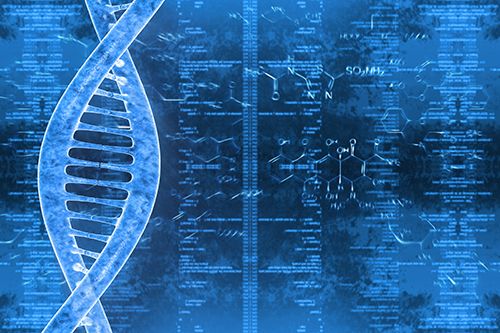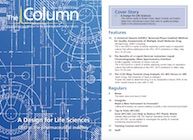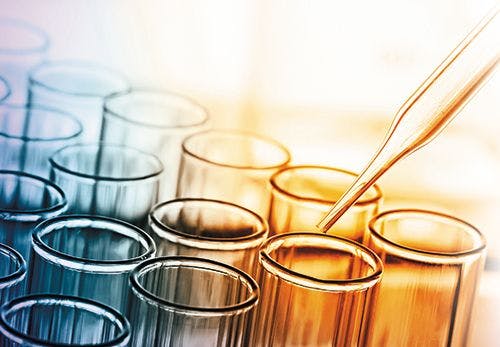Refining Nucleic Acid Characterization Using HILIC–MS
A newly developed HILIC stationary phase containing modified diol groups on a polymer-based particle has offered renewed hope of an alternative to IP-reversed-phase LC.
vitstudio/Stock.adobe.com

The characterization of nucleic acids and their modifications continues to reveal the complexities of biological systems as researchers in both academic and industrial laboratories push for an ever-greater understanding of the intricacies of biological systems.
Two particularly important areas of research include the characterization of postâtranscriptional modifications to ribonucleic acid (RNA) and the development of synthetic antisense and aptamer-based nucleic acids for gene silencing experiments and therapeutics.
Currently liquid chromatography coupled to tandem mass spectrometry (LC–MS/MS) is the primary technique for direct detection of unmodified and modified oligonucleotides, with the “gold-standard” method for separation being developed over two decades ago.
This technique requires the use of ion-pair reagents to obtain optimal chromatographic performance and ionization. Although the use of these reagents can deliver high chromatographic performance, among other desirable advantages, these gains do not come without compromise. The technique requires the use of a modifier, such as 1,1,1,3,3,3-hexafluoro-2-propanol (HFIP), to overcome the reduced MS sensitivity for electrospray ionization (ESI) (1,2). It has also been demonstrated that the choice of ionâpair reagent can affect the degree of ion suppression and that the optimal ion-pair reagent and modifier system can depend on the type and content of the oligonucleotide, necessitating extensive screening for optimized chromatographic and ionization conditions (3).
Furthermore, it is highly advisable to maintain a dedicated system for IP-reversed-phase LC because of contamination concerns that can result in the suppression of ionization for samples analyzed in positive polarity, adding extra costs and commitments to the technique (4).
Alternatives to the traditional IPâreversedâphase LC approach have been explored over the years, including studies on the use of hydrophilic interaction liquid chromatography (HILIC). These studies have focused on a variety of mobile and stationary phases, however, poor column stability, poor retention because of silanol activity, and a need for improved resolution of multiple component mixtures have been reported, among other issues (5,6,7).
Despite these past setbacks, a newly developed HILIC stationary phase containing modified diol groups on a polymer-based particle has offered renewed hope of an alternative to IP-reversed-phase LC. The column has been specifically developed for the separation and analysis of oligonucleotides. To test the viability of the column, researchers from the University of Cincinnati performed a full evaluation of the stationary phase with demonstration samples (4). The resulting method, which utilizes HILIC–MS without the use of ion-pair reagents, was found to offer suitable retention, selectivity, and resolution for multicomponent oligonucleotide mixtures. The method used a commonly employed LC–MS mobile phase system containing water, acetonitrile, and ammonium acetate. In the case of oligodeoxynucleotides, analysis of a similar level of performance was shown for HILIC to that obtained from the IPâreversed-phase LC methods in common use.
The method demonstrated suitable reproducibility for quantitative applications, however, chromatographic resolution of closely related phoporothioate impurities could not match that of a finely optimized IPâreversedâphase LC–UV method. Despite this, researchers suggest that the HILIC–MS method presents an attractive alternative to current methods with additional work warranted to define the extent to which the method could be used to improve the characterization of nucleic acids and their modifications.
References
- A. Apffel et al., Anal. Chem. 69, 1320–1325 (1997).
- A. Apffel et al., J. Chromatogr. A777, 3–21 (1997).
- B. Basiri, M.M. Murph, and M.G. Bartlett, Soc. Mass Spectrom. 28, 1647 –1656 (2017).
- P.A. Lobue, M. Jora, B. Addepalli, et al., J. Chromatogr. A1595, 39–48 (2019).
- L. Gong and J.S. McCullagh, J. Chromatogr. A1218, 5480–5486 (2011).
- S. Studzinska, F. Lobodzinski, and B. Buszewski, J. Chromatogr. B1040, 282–288 (2017).
- R.N. Easter, K.K. Kroning, J.A. Caruso, and P.A. Limbach, Analyst 135, 2560–2565 (2010).

New Method Explored for the Detection of CECs in Crops Irrigated with Contaminated Water
April 30th 2025This new study presents a validated QuEChERS–LC-MS/MS method for detecting eight persistent, mobile, and toxic substances in escarole, tomatoes, and tomato leaves irrigated with contaminated water.

.png&w=3840&q=75)

.png&w=3840&q=75)



.png&w=3840&q=75)



.png&w=3840&q=75)










